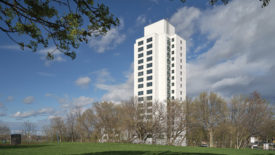Home » 2022 Global Best Projects
Articles Tagged with ''2022 Global Best Projects''
Global Best Projects
Global Best Projects
Best Project, Renovation/Restoration: Matta Sur Community and Health Center
Read MoreGlobal Best Projects
Best Project, Power/Industrial: Ras Ghareb Gulf of Suez 262.5-MW Wind Farm
Read MoreThe latest news and information
#1 Source for Construction News, Data, Rankings, Analysis, and Commentary
JOIN ENR UNLIMITEDCopyright ©2024. All Rights Reserved BNP Media.
Design, CMS, Hosting & Web Development :: ePublishing
_ENRready.jpg?height=168&t=1670509491&width=275)

















